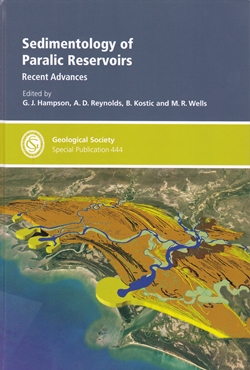The Sedimentology of Paralic Reservoirs: Recent Advances

This is a good compilation of research offering a suite of analogues to aid the study of paralic reservoirs. It begins with an excellent overview by Reynolds, providing a helicopter type perspective of reservoir architecture, recovery efficiency and stratigraphic and sedimentological description of paralic systems with a subsurface uncertainty focus that be used to better appraise and manage such reservoir systems. This forms a foundation to a suite of case study based papers from outcrop to subsurface containing much detail that will be of value for benchmarking subsurface systems.
Most are largely descriptive works that provide insights and reference points for those studying analogous paralic systems. The excellent paper by Flood and Hampson on the Ness Formation in the Brent Field offers an interesting insight into the potentially predictive variability in sandbody architecture and controls of a floodplain system tied to accommodation space and location on the coastal plain.
Longhitano and Steel’s paper on controls on sandbody geometry and architecture in tidal seaways based on work from the Cretaceous in Wyoming and the Tertiary of the Calabrian arc, Italy provide an insight into stacking patterns and sandbody geometry in tectonically controlled tidal seaway systems. Gomis-Cartesio et al’s work on the shelf edge delta systems from the Karoo in South Africa offers new observations on the shape, scale and geometry of slope channel systems and their potential predictability. This is another excellent contribution on these superbly exposed South African shelf, slope and basinal systems.
The other papers in this volume are all very good compilations of good quality, detailed research and analysis. Paralic reservoirs remain an important element of subsurface systems. With the increasing ability of numerical characterisations to include detailed subsurface description and better appreciation of how to assess and manage subsurface uncertainty and resulting risks the rich descriptions offered by this volume are of value to analogue and benchmark studies. This is a useful compilation with a diverse geographical spread that will doubtless be of value to future workers.
The content does not fully reflect the range of paralic depositional systems, being tidal/wave process dominated. I would also personally have liked to see more papers focussed on field development and reservoir management versus exploration and appraisal, reflecting todays need to focus increasingly in recovery efficiency and production geology but this is I suspect a reflection of topics offered.
Reviewed by Mike Bowman
SEDIMENTOLOGY OF PARALIC RESERVOIRS: RECENT ADVANCES by G J HAMPSON, A D REYNOLDS, B KOSTIC AND M R WELLS (Eds) 2017. Geological Society of London Special publication SP444. 432pp, hbk. List Price: £120. Fellows’ Price: £60. Other Societies’ Price: £75. W: https://www.geolsoc.org.uk/SP444.